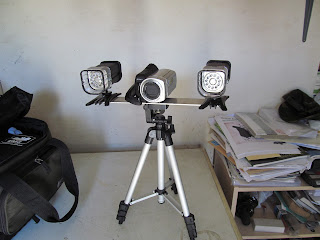As bat
Ecologists we are often told/asked by Architects that they will/would like to
use a Breathable Roof Membranes (BRM) in there development project, however we
advise that they are not used when bats are encountered. Why?
Background: -
BRM’s are increasing
used in modern buildings due to their energy efficient nature, current
insulation standards and their ability to allow water vapour (but not liquid to
enter) to exit the roof void. Formerly traditional materials such as felt and
air-bricks were used to prevent water vapour build up.
BRM’s are
produced using layers of non-woven materials that are then bonded through
pressure and heat. A long polypropylene fibre is used to produce the outer
layer and it is this that has caused concern amongst bat workers.
Although common,
most people don’t realize that some bats (due to habitat loss) now rely on
man-made structures for shelter and security, often this is a dwelling or
similar. This is where problems arise and these often go unnoticed due to the
bats habits.
What are the issues?
There are three
main issues with BRM’s and bats: -
1.
Entanglement or trapping
2.
Microclimate
3.
Membrane longevity
Entanglement
For Ecologists
this is by far the most concerning aspect of BRM’s and bat interactions.
Although not scientifically proven (to date) anecdotal evidence strongly
suggests that bats are getting trapped in the fibres of the BRM. Stacey Waring
is currently undertaking a research project on this very subject and the
evidence gained strongly suggests bats do get entangled, check out her Blog http://www.batsandbrms.co.uk/images.php
Microclimate
A traditional
felt lined roof will have very different thermal properties to a BRM (Waring,
S. et al 2013). However the research
here is lacking and other than the obvious there is no way of knowing the
effect that BRM’s may have on a long term roost.
Further research
in roosts that have been changed from a traditional felt to BRM needs to be
undertaken. It is however likely that temperature and humidity will be affected
(Waring, S. 2013)
Membrane Longevity
Again research
is lacking but anecdotal evidence suggests that damage to the membrane can
occur from when the bats claws become entangled. This causes something called
‘fluffing’. This is where the fibres of the BRM fluff up to form a cotton wool
like structure on the surface of the BRM.
Other concerns
are the oil in bats fur, urine and droppings causing the BRM to lose its water
vapour/proofing properties.
This in turn
could cause damage to the BRM installed and the water vapour and water tight
properties of the BRM to become reduced or useless (Waring, S. et al,2013).
So, which BRM’s are suitable to use when bats are
present?
Well the simple
answer is, none!
Current advice
is not to use a BRM in a roof where bats are going to be encountered.
Traditional bitumen felt (although having its own issues) has been used for
over 100yrs, with only a minor number of reports of bats being entangled.
Put simply, if
bats are going to be present in a roof following re-roofing or a new build
following demolition of an older building a traditional felt should be used.
Although there is an increase in the use of the BRM current Building Regs allow
the use of a traditional felt, normally known as a ventilated roof system.
References: -
Waring, S. 2013,
http://www.batsandbrms.co.uk/,
assessed on 25/11/2013Waring, S. et al, 2013, Double Jeopardy: The Potential for Problems when Bats Interact with Breathable Roof Membranes in the UK.






